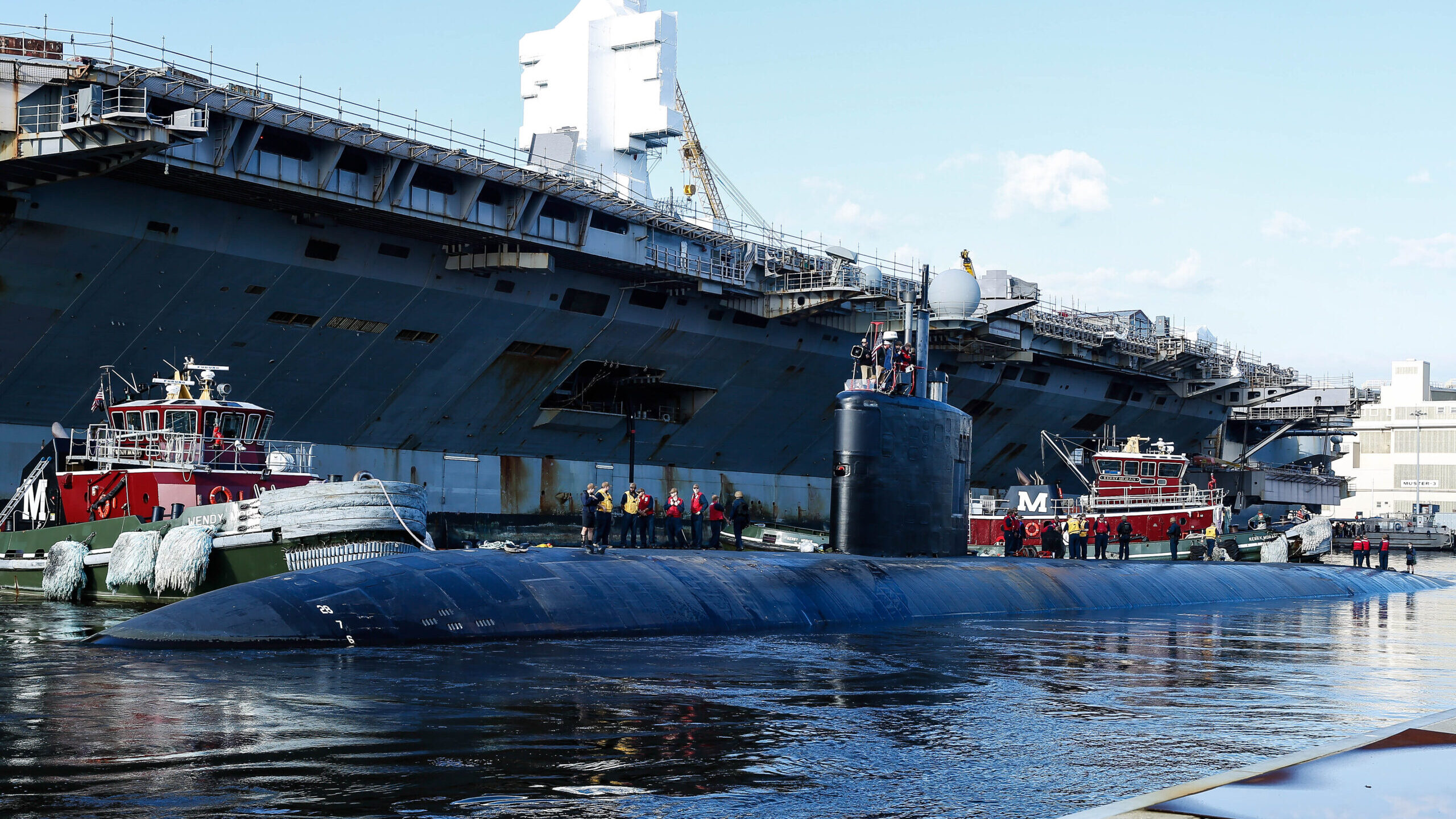
The submarine Pasadena (SSN 752) returned to the fleet Oct. 31 following successful completion of its maintenance availability at Norfolk Naval Shipyard. (Photo provided by US Navy.)
Corrected Nov. 22, 2021 at 11:10 p.m. ET: The original version of this story incorrectly stated the Naval Submarine League is hosted by the Navy League. The story has been updated to reflect that Naval Submarine League is a separate organization.
WASHINGTON: Norfolk Naval Shipyard recently completed a yearlong maintenance period for the Los Angeles-class submarine Pasadena (SSN 752), repairing and replacing components throughout the boat, in what was an early test of the Navy’s ongoing maintenance initiative.
“Pasadena served as NNSY’s pilot project leveraging the Naval Sustainment System — Shipyards (NSS-SY) program. NSS-SY is underway at all four public shipyards,” according to a Nov. 5 service statement. “NSS-SY initiatives included establishing an operations control center to drive project team communications and resolve barriers in work execution, and ‘crew boards’ to track jobs supporting the boat’s overhaul.”
Naval sustainment system-shipyards is a service-wide effort to improve the maintenance practices at the Navy’s four public shipyards and is derived from a similar aviation effort first implemented in 2018 by then-Navy Secretary Richard Spencer.
The maintenance period, a drydocking selected restricted availability, took one year to complete and is the first of its kind done at the Virginia shipyard in over a decade, the statement added. The Norfolk shipyard is also currently working on the Toledo (SSN 769) and Dwight D. Eisenhower (CVN 69). The statement acknowledges the initial schedule had the boat finishing its maintenance period this past spring.
Other vessels, such as the Hartford (SSN 768) and Boise (SSN 764), are being sent to private shipyards to complete their maintenance availabilities due to backlogs at the public shipyards.
“Beyond NSS-SY improvements, Pasadena’s team incorporated lessons learned from Portsmouth Naval Shipyard’s USS Newport News (SSN 750) DSRA in planning the availability and executing similar jobs,” according to the statement. “Additionally, when Pasadena missed its original undocking date in the spring, the project team worked to perform more jobs with the boat on keel blocks to condense the schedule following undocking.”
The sub’s return to the fleet comes at a fortuitous time for the Navy. The attack submarine Connecticut (SSN 22) remains docked in Guam following the boat’s allision with an uncharted seamount in October. (A collision refers to two moving objects striking each other, while an allision refers to a moving object striking a stationary one.)
Maintenance availabilities are planned in years advance, meaning the timing of Pasadena’s return to the fleet is coincidence. Still though, the Navy has a history of its submarines being docked for years longer than anticipated so the unscheduled docking of any boat has potential to cause problems for operations.
“The world gets a vote and things change and unexpected incidents create more demand for repairs. The attack subs have always been the poor cousin in the public shipyards in terms of getting priority,” Rep. Joe Courtney, D-Conn., said at a recent congressional hearing.
Last week Navy Secretary Carlos Del Toro confirmed reports that the service’s investigation into the Connecticut incident concluded the boat hit an uncharted seamount and expressed his belief those who were responsible would be held accountable. Several hours later, US 7th Fleet announced it was relieving the boat’s top three leaders, Cmdr. Cameron Aljilani, Lt. Cmdr. Patrick Cashin and Master Chief Sonar Technician Cory Rodgers.
Regarding the Connecticut’s condition, the announcement said only that a damage assessment is ongoing and the boat will return to Bremerton, Wash., for repairs. The status of the Connecticut is likely to be a topic of discussion next week at the Naval Submarine League’s annual symposium, one of the few Washington, DC events that regularly attracts the service’s top submarine commanders and acquisition officials.
Why supporting Ukraine is ‘main priority’ for Norway’s defense chief this year
“I have more sense of urgency in 2024 than I had in 2023” about how quickly Russia can rearm its military, Norway’s Chief of Defense, Gen. Eirik Kristoffersen, told Breaking Defense.


























